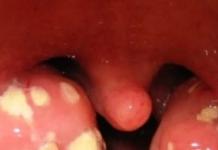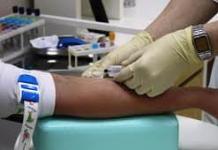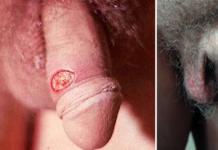Gonorrhea is a human infectious disease caused by Neisseria gonorrhoeae, which is primarily sexually transmitted.
ICD-10 code
A54 Gonococcal infection.
A54.0 Gonococcal infection of the lower genitourinary tract without abscess formation of the periurethral and accessory glands.
A54.1 Gonococcal infection of the lower genitourinary tract with abscess formation of the periurethral and accessory glands.
A54.2 Gonococcal pelvioperitonitis and other gonococcal infection of the genitourinary organs.
A54.3 Gonococcal eye infection
A54.4 Gonococcal infection of the musculoskeletal system.
A54.5 Gonococcal pharyngitis.
A54.6 Gonococcal infection of the anorectal region.
A54.8 Other gonococcal infections.
A54.9 Unspecified gonococcal infection
EPIDEMIOLOGY
Gonorrhea is one of the most common STIs. The disease is subject to mandatory registration when detected on the territory of the Russian Federation. The prevalence of gonorrhea is significantly influenced by social, demographic and behavioral factors. In recent years, a relatively low incidence of gonorrhea has been noted, which, apparently, is due to the incomplete registration of patients due to the appeal of some patients to commercial medical institutions, insufficient examination, wide and uncontrolled use of antibiotics, and the limited use of cultural diagnostic methods.
ETIOLOGY (CAUSES) GONORRHEA
The causative agent of gonorrhea is the gram-negative diplococcus Neisseria gonorrhoeae, which is a member of the Neisseriaceae family of the genus Neisseria. This is a bean-shaped coccus, the cells of which are arranged in pairs, with concave sides to each other. The size of the cocci is 1.25–1.60 µm in length and 0.7–0.8 µm in diameter.
PATHOGENESIS
Infection with gonococci causes an inflammatory process, which leads to degenerative and infiltrative changes in the organs of the genitourinary tract, rectum, oropharynx, conjunctiva. In women, it is primarily affected by the spread of the inflammatory process to the uterus, fallopian tubes, and ovaries. In the affected organ, a cellular infiltrate is initially formed, which is subsequently replaced by connective tissue.
Pathogenesis of complications of gestation
Untreated infection can spread intracanalicularly ascending with the development of amnionitis or chorioamnionitis, leading to fetal death, premature rupture of OS, premature birth. The transplacental route of transmission of gonococci has not been proven. Fetal infection is possible both antenatally (with gonococcal chorioamnionitis) and intrapartum (with the mother).
CLINICAL PICTURE (SYMPTOMS) OF GONORRHEA IN PREGNANT WOMEN
The incubation period for gonorrhea is 3 to 14 days (average 5–6 days). Chronic recurrent course is often noted. The most common diseases are urethritis, cervicitis, proctitis, salpingo-oophoritis is not excluded, which is rare. The clinical picture of gonorrhea in pregnant women has no features.
Main clinical symptoms
Among women:
Vaginal discharge;
Dysuria;
· Acyclic bleeding;
· Pain in the lower abdomen;
Dyspareunia;
Pain in the rectal area and discharge from it in the presence of proctitis.
In newborns:
Conjunctivitis;
Sepsis.
The main manifestations of the disease
Among women:
· Cervicitis;
· PID;
Urethritis;
Perihepatitis;
Bartholinitis;
Pharyngitis;
Conjunctivitis;
· Proctitis;
Disseminated gonococcal infection: arthritis, dermatitis, endocarditis, meningitis.
In newborns and infants:
Ophthalmia of newborns;
· AF infection syndrome;
· Dissemination of gonococcal infection.
Possible complications in women:
PID (endometritis, salpingitis, salpingo-oophoritis, etc.);
· Infertility;
· Ectopic pregnancy;
· Reiter's syndrome.
DIAGNOSTICS OF GORRHEA DURING PREGNANCY
Diagnostics is based on the following criteria:
· Data of anamnesis (indication of sexual contact with a sick or possibly infected partner with gonorrhea);
· Assessment of subjective and objective symptoms of the disease;
· Detection of gonococci in laboratory studies.
ANAMNESIS
Anamnesis in adults indicates an indication of sexual intercourse. When questioning, the patient reveals a possible
source of infection.
It is important to clarify:
The time elapsed from the moment of the last sexual contact with the alleged source of infection until the onset of symptoms of the disease;
· Results of examination of the sexual partner for gonorrhea.
PHYSICAL STUDY
It is necessary to examine the patient completely to exclude manifestations of other STIs, to assess the condition of all groups of lymph nodes. All parts of the abdomen, large vestibular and periurethral glands, urethra are palpated, bimanual vaginal examination is performed.
LABORATORY RESEARCH
Laboratory diagnostics of gonorrhea includes (table 48-8):
· Microscopy of smears stained with methylene blue and Gram;
· Cultural method. It is used to diagnose gonorrhea in pregnant women, minors, in the presence of cervicitis and PID in women. When it is carried out, the antibiotic sensitivity of the isolated gonococci is required;
· Non-cultural methods (molecular biological - PCR).
If indicated, a culture study is performed. Given the high sensitivity of gonococci to drying and temperature, inoculation is recommended to be done immediately on chocolate agar or other nutrient medium for the isolation of gonococci. If it is impossible to inoculate the clinical material on a nutrient medium for gonococci, it is necessary to use special transport media.
A combination of microscopic and cultural methods is used as a criterion for cure.
Additional use of non-cultural methods (PCR) in this case is possible no earlier than 3 weeks after the end of treatment.
Serological methods are not used to diagnose gonorrhea.
The following main areas for taking material are distinguished:
· The cervical canal of the cervix and urethra;
· Rectum when indicating anogenital contact;
· Pharynx if orogenital contact is indicated.
It is possible to take material for the detection of gonococcus and from other areas:
· Rectum and urethra, if the cervix is removed;
· Pelvic organs during laparoscopy in women with PID;
· Blood and other fluids (pus) during dissemination of the infection;
· Synovial fluid;
· Conjunctiva of the lower eyelid;
· The first portion of freely released urine (10-15 ml) for the PCR method (rarely).
SCREENING
The following are subject to examination for gonorrhea:
Women with clinical manifestations of mucopurulent cervicitis, symptoms of adnexitis;
· Persons who have had sexual contact with a patient with gonorrhea;
· Persons undergoing examination for other STIs;
· Pregnant women when registering for pregnancy;
· Pregnant women aimed at termination of pregnancy;
· Newborns with purulent conjunctivitis (if the gonorrheal etiology of the process is confirmed, parental examination is necessary).
DIFFERENTIAL DIAGNOSTICS
Differential diagnosis of gonorrhea is carried out with cervicitis caused by other microorganisms, primarily chlamydia.
With skin lesions - with keratoderma with Reiter's disease.
With joint damage - with reactive arthritis, Reiter's disease, arthritis of a different etiology.
In the presence of symptoms of conjunctivitis - with conjunctivitis of chlamydial, viral etiology.
With meningitis in children - with meningitis of meningococcal etiology, viral lesions of the tissue and membranes of the brain.
EXAMPLE FORMULATING A DIAGNOSIS
Uncomplicated gonococcal infection of the lower urinary tract (urethritis, cervicitis).
Table 48-8. Laboratory methods for the diagnosis of gonorrhea and their features
| Sampling area | Diagnostic method | Comments (1) |
| Endocervix / urethra (in adult women) | Microscopic with Gram stain for the detection of intracellular diplococci | The sensitivity of the method is lower than when using material from the urethra in men |
| Cultural | To confirm the diagnosis (isolation and identification of Neisseria) and to conduct an antibiotic susceptibility test | |
| Non-cultural (PCR) | Only as a screening, followed by confirmation by other methods | |
| Pharynx / conjunctiva / rectum | Cultural only (microscopic with Gram stain not applicable) | Confirmation of the diagnosis (isolation and identification of Neisseria) and an antibiotic susceptibility test |
| Non-cultural (PCR) | ||
| Urine | Non-cultural (PCR) | Only as a screening followed by examination of material from the urethra and cervical canal and detection of Neisseria by other methods |
| Sepsis | Microscopic method with Gram stain for clinical materials from the urethra and cervical canal, skin rashes | Screening method. It is obligatory to study material from other localizations by the cultural method. |
| The culture method for clinical materials from the urethra and cervical canal, skin rashes, rectum, nasopharynx, cerebrospinal fluid, synovial fluid, blood | The main diagnostic method, confirmation of the diagnosis (isolation and identification of Neisseria) and an antibiotic susceptibility test | |
| Non-cultural (PCR) | As screening only followed by culture confirmation |
TREATMENT OF GORRHEA DURING PREGNANCY
OBJECTIVES OF TREATMENT
Eradication of gonococci, resolution of the inflammatory process, prevention of complications.
INDICATIONS FOR HOSPITALIZATION
Gonorrhea in pregnant women; complicated course of gonococcal infection (conjunctivitis, damage to the cardiovascular, nervous system, musculoskeletal system, etc.) require inpatient treatment.
The duration of inpatient treatment is determined by the nature of clinical manifestations and the severity of the inflammatory process and is 2–4 weeks.
NON-MEDICINAL TREATMENT
In the presence of complications, physiotherapeutic treatment methods can be used after consulting a physiotherapist, depending on the severity of the disease and the patient's condition.
MEDICINAL TREATMENT OF GONORRHEA IN PREGNANT WOMEN
Treatment of pregnant women is carried out at any gestational age in a hospital setting with antibacterial agents that do not have a pathological effect on the fetus. The choice of drug for treatment depends on the manifestations of the disease (Table 48-9).
In the absence of results from treatment, it is recommended to consider the following possible causes:
· False positive test result;
• non-compliance with the treatment regimen, inadequate therapy;
· Repeated contact with an untreated partner;
· Infection from a new partner;
· Infection with other microorganisms.
Table 48-9. Medicines used to treat and prevent gonorrhea
| Indications for use | Medicines of choice | Alternative medicines |
| Gonorrhea in pregnant and lactating mothers | Ceftriaxone * intramuscularly 250 mg once or |
Erythromycin inside the first 2 days 400 thousand units 6 times a day, then 400 thousand units 5 times a day (course dose 8.8 million units) or |
| Spectinomycin intramuscularly 2.0 g single dose or |
Azithromycin inside 1.0 g once | |
| Cefixime * 400 mg orally once | ||
| Conjunctivitis | Ceftriaxone * intramuscularly 1.0 g single dose | |
| Ophthalmia of newborns | Ceftriaxone * intramuscularly 25-50 mg / kg body weight (no more than 125 mg) once or intravenously 1 time per day for 2-3 days or |
|
| Cefotaxime * intramuscularly 100 mg / kg body weight once plus abundant lavage of the conjunctiva with isotonic sodium chloride solution | ||
| Prevention of ophthalmia in newborns | Silver nitrate topically 1% aqueous solution once 2-3 drops in each eye or |
|
| Erythromycin external ophthalmic ointment 0.5% single dose or |
||
| Tetracycline topical ophthalmic ointment 1% single dose | ||
| Pharyngitis | Ceftriaxone * intramuscularly 250 mg once | |
| Anorectal infection | Ceftriaxone * intramuscularly 250 mg once |
Cefuroxime intramuscularly 1.5 g once or |
| Cefodizim intramuscularly 500 mg once or |
||
| Azithromycin inside 1.0 g single dose | ||
| Complications of neonatal gonococcal infection (meningitis) | Ceftriaxone * intramuscularly or intravenously at the rate of 25-50 mg / kg body weight 1 time per day for 7 days (with meningitis - at least 10-14 days) or |
|
| Cefotaxime * intramuscularly or intravenously at the rate of 25 mg / kg body weight 2 times a day for 7 days (with meningitis - at least 10-14 days) | ||
| Prevention of gonorrhea in newborns born to mothers with this infection | Ceftriaxone * intramuscularly at the rate of 25-50 mg / kg body weight (no more than 125 mg) once or |
|
| Spectinomycin intramuscularly 40 mg / kg body weight (no more than 2.0 g) once |
Note: * Cefixime, cefotaxime, and ceftriaxone are not indicated for patients with a history of cephalosporin or penicillin allergy.
If necessary, you can use another treatment option. Therapy with the main or one of the alternative drugs is continued for at least 24–48 hours.
In order to prevent a possible concomitant chlamydial infection, treatment is simultaneously prescribed using the scheme, as in the case of chlamydial infection.
ASSESSMENT OF TREATMENT EFFICIENCY
Evaluation of the effectiveness of treatment is carried out on the basis of clinical laboratory and instrumental studies confirming the eradication of the gonococcus and the resolution of the inflammatory process.
Maintaining contact persons
The examination of patients is carried out depending on the history of sexual intercourse, the severity of clinical symptoms and the expected duration of infection (in the acute course of gonorrhea - from 3 days to 3 months; with torpid and low-symptom course - 6 months).
A newborn born of a mother with gonorrhea is taken from the vulva and conjunctiva of both eyes for microscopy and culture. If gonorrhea is detected in a newborn, his parents are examined.
FURTHER INTRODUCTION
· Sexual identification is mandatory and important.
· Treatment of the sexual partner is mandatory.
· Registration: send an emergency notification to the KVD in the form 089 / ukv.
PREVENTION OF GORRHEA IN PREGNANCY
Prevention of gonorrhea includes activities common to all STIs, and is divided into primary and secondary.
Primary prevention aims to change behavior in high-risk groups in order to avoid infection. It is necessary to promote a healthy lifestyle, safe forms of sexual relations through the media, as well as in educational and medical institutions. It is necessary to talk about the clinical manifestations of genital infections, ways of infection, methods of prevention, taking into account the educational level of the audience. It is important to explain the harm of self-medication and treatment to lay people.
Secondary prevention is aimed at:
· Examination and treatment of patients with diagnosed STIs to reduce the likelihood of transmission of infection to their sexual partners;
· Reducing the risk of re-infection among sick or previously infected people;
· Effective diagnosis and, if necessary, treatment of contact persons.
All sexual partners of patients with symptoms of gonorrhea are subject to compulsory examination and treatment if they have had sexual intercourse in the last 14 days.
In the absence of symptoms of the disease in a patient with gonorrhea, all sexual partners who have had sexual contact with her in the last 60 days are subject to examination.
Specific preventive measures in newborns consist in laying erythromycin eye ointment behind the lower eyelid in the first minutes after birth.
Conducting epidemiological measures among contact persons (remediation of the epidemic focus) is carried out
together with the district epidemiologist:
· Examination and examination of contact persons;
· Assessment of laboratory data;
· Deciding on the need for treatment, its volume and timing of observation.
In case of residence of contact persons in other territories, an attire is sent to the territorial KVU.
PATIENT INFORMATION
It is necessary to exclude sexual intercourse until complete recovery, strictly observe the regimen of taking medications and visit a doctor in a timely manner to determine the criteria for cure.
FORECAST
The prognosis with timely treatment started is favorable.
When a woman is in an interesting position, the state of her health is important not only for her, but also for her unborn child. Many pathologies can adversely affect the formation of the fetus, so it is important to prevent them, and if there is a disease, then urgently take measures to cure it. Such serious pathologies include gonorrhea during pregnancy. What is this disease, how can you get infected with it? Is it possible to completely recover? What are the consequences for the baby?
What is gonorrhea
Once in the human body, gonococci begin to develop rapidly, provoking the disease
This pathology is one of the most serious, which pose a great danger to a developing baby. Bacteria lead to the development of a pathological process that simultaneously captures all organs of the woman's reproductive and excretory systems. Therefore, if gonorrhea develops during pregnancy, the consequences for the child can be dire if urgent measures are not taken.
Important! Gonorrhea is insidious in that it can develop in the body for a long time, affecting more and more organs, but it does not show symptoms.
How to suspect a disease
Pregnancy and gonorrhea are two incompatible concepts, therefore, if it so happened that the woman could not protect herself from this pathology, then it is necessary to start treatment as soon as possible.
Very often, if the infection is already present, the woman is unaware of it, because there are no obvious signs of the disease. Sometimes gonorrhea in pregnant women and not only in them is similar in its manifestations to urological pathologies, so women try to cope with symptoms on their own. There may be complaints about:
- some discomfort while urinating.
- More vaginal discharge appears, but future mothers may associate this with their condition.
- The discharge can have a rather unpleasant odor.
- Often a headache, but this symptom of a woman is not associated with the presence of a serious infection in the body.
- There is a burning sensation and itching of the genitals, the symptom resembles thrush, so it does not make women think seriously and visit a doctor.
- Soreness and discomfort during intimacy.
- The temperature may rise.
The appearance of discomfort during urination by women can be confused with symptoms of cystitis, but this can be a sign of a dangerous disease. The development of gonorrhea often provokes severe headaches, and expectant mothers do not associate them with a dangerous pathology.
Need to know. All these symptoms can be observed in the acute phase of the disease, and it lasts only about 2 weeks. Then the symptoms begin to subside, the woman thinks that the disease has passed and medical consultation is not needed.
This is the whole danger of the situation: the infection continues to flourish and increases the risk of developing serious complications that will affect not only the woman, but also her unborn baby.
Possible complications of gonorrhea
After the acute form passes, if therapy is not started, the disease becomes chronic. This usually occurs 2 months after infection. At this time, gonorrhea does not show symptoms during pregnancy, but the danger increases. Chronic gonorrhea is fraught with the following complications:
- Termination of pregnancy, and this can happen at any time.
- Premature birth.
- Early miscarriage.
- The development of placental insufficiency, which negatively affects the condition of the child.
- The chronic form can provoke developmental pathologies in the fetus.
If there are all the prerequisites for terminating pregnancy, then there is a possibility that a pathological microorganism develops in the body
Need to know. Lack of appropriate treatment for gonorrhea can end in disaster for a woman. She may never become a mother again.If a woman is sick, then during childbirth there is a high risk of infection of the baby. And this can lead to the following consequences:
- Development of sepsis.
- Infectious diseases of the joints.
- Dermatological problems.
- Frequent conjunctivitis, especially immediately after birth.
- Meningitis is the most serious and fatal complication.
After birth, babies infected with gonorrhea suffer from conjunctivitis
Diagnosis of the disease
A diagnosis can only be made based on the results of a study, therefore a pregnant woman is simply obliged to regularly pass all the necessary tests, and even better to do this before pregnancy. If you suspect gonorrhea, the doctor will send you for the following studies:
- Vaginal swab for gonococci.
- Since a smear for gonorrhea during pregnancy is only 60% accurate, a study of vaginal secretions is mandatory.
- PCR research allows you to detect the causative agent of gonorrhea in almost 100% of cases, since the method is based on the determination of gonococcus DNA.
- The ELISA test is carried out on the basis of a blood test and allows you to accurately determine the pathology.
First of all, the doctor will take a smear, but he will not give complete information, therefore, other tests are necessarily prescribed.
Modern research methods make it possible to determine the pathogen, quite often other pathogens are found along with the gonococcus, for example, provoking chlamydiasis and trichomonellosis.
Treatment of gonorrhea in pregnant women
Important! If we compare the risk of developing complications from the disease and taking medications during pregnancy, then from gonorrhea it is much more serious. That is why, even while carrying a baby, treatment is mandatory.
If a pregnant woman is diagnosed with gonorrhea, treatment involves several directions:
- Taking medications that strengthen the woman's immune system.
- Antibiotic therapy course. It must be at least 2 weeks old.
- The recovery period, accompanied by the intake of vitamin preparations.
- Treating a partner to eliminate the risk of re-infection.
Given that the causative agent is a bacterial organism, antibiotics are prescribed to the woman. The safest for her are:
- Flemoxin.
- Benzylpenicillin.
- Ceftriaxone.
- Cephalexin.
- Erythromycin.
After undergoing a course of treatment, a woman must be prescribed vitamins and minerals to support the body and strengthen the immune system.
 Any antibiotics while carrying a baby should be prescribed only by a doctor, self-medication is unacceptable.
Any antibiotics while carrying a baby should be prescribed only by a doctor, self-medication is unacceptable. Treatment of a pregnant woman with gonorrhea is most often carried out in a hospital, in an infectious disease ward, in order to eliminate the risk of infection in households. Every pregnant woman should be aware of the seriousness of the situation, therefore, in no case should therapy be interrupted without the knowledge of the doctor.
Is it possible to avoid infection
A woman, planning a pregnancy, must undergo a full examination in order to identify the presence of chronic pathologies, cure them, and only then think about the birth of a baby. Quite often, during such examinations, venereal diseases are discovered, which the woman does not even suspect. If gonorrhea is treated in a timely manner, then the risk for a woman and her child is reduced many times, it is possible to become pregnant and give birth to a healthy baby.
- Avoid casual relationships that can end in disastrous health.
- During intimacy with a man, even with a husband, it is necessary to use high-quality condoms while carrying a baby.
- Timely take all the tests that the doctor recommends.
- Observe the hygiene of the body and personal space.
When planning a pregnancy, and especially during the period of carrying a baby, a woman should be very careful about her health.
In this article, you will learn: What is the danger of gonorrhea during pregnancy, the causes, forms and signs of the disease, how it is diagnosed and how the treatment is carried out.
Gonorrhea- This is a fairly serious disease that is sexually transmitted. Its causative agent is the gram-negative diplococcus Neisseria gonorrhoeae, which belongs to the Neisseriaceae family of the genus Neisseria. Gonorrhea diagnosed during the birth of a new life can adversely affect the health of the child and even lead to his death. It is she who can affect the premature rupture of amniotic fluid, as well as the onset of labor.
Features of gonorrhea and what is its danger


The inflammatory process caused by gonococci affects degenerative changes in the bladder, rectum, and oropharynx. Women who are diagnosed with this disease often suffer from inflammation of the uterus, ovaries and fallopian tubes, since a cellular infiltrate is gradually formed in the affected organs, which is then replaced by connective tissue.



The risk of developing gonorrhea before pregnancy and after its onset
During pregnancy, gonorrhea should be detected as early as possible, which is why it is extremely important to pass all the tests provided for by the medical protocol in a timely manner. Untreated disease can lead to:
- spontaneous miscarriages;
- damage to the genitals;
- infection of the membranes, as well as amniotic fluid;
- the appearance of placental insufficiency;
- infection of the baby at the time of delivery.
The severity of the course of the disease is directly affected by the specific period of infection. In the case when the infection occurs before the fertilization of the egg, the disease proceeds in a latent form, therefore it often turns into a chronic stage and can cause an ectopic attachment of the ovum.
Causes of the disease
Gonorrhea can be contracted through sexual contact. In rare cases, infection occurs in a household way through personal hygiene products, washcloths, towels, and underwear.
The spread of infection in the female body occurs in lymphogenous and hematogenous ways. The incubation period of the disease ranges from three days to two weeks. Also, sometimes there is a chronic recurrent course of the disease. This disease is most often accompanied by such complications as:
- cervicitis;
- urethritis;
- proctitis;
- salpingo-oophoritis.



Forms of the disease
The clinical picture of the course of gonorrhea in pregnant women has no peculiarities. Medical science conventionally divides the disease into three stages:
- fresh, which can be sharp, subacute and torpiadic.
- chronic;
- latent.
Fresh form - diagnosed if no more than two months have passed since the day of infection. The acute form of the disease is observed when the obvious symptoms of the disease are pronouncedly increasing for two weeks after intercourse.
The torpiad form is considered the most dangerous, in which there are practically no signs of the disease, therefore, women expecting a child do not seek medical help, as a result of which the disease becomes chronic. The latent form, as well as the chronic one, proceeds without obvious symptoms, therefore, it often leads to impaired fertility, as well as to the formation of adhesions in the fallopian tubes and is a constant source of infection of the sexual partner.
Signs of gonorrhea in pregnant women
1. May manifest as the following symptoms:
- the presence of vaginal purulent discharge;
- periodic bleeding;
- discomfort in the lower abdomen;
- itching, as well as burning in the genitals;
2. The acute form can cause:
- a sharp increase in body temperature;
- cramps, as well as acute pain when urinating;
- headache;
- swelling and redness of the external opening of the urethra, as well as the external labia;
- pain during intercourse.
Diagnosis of the disease
Gonorrhea during pregnancy can lead to the most negative consequences for the child, which is why timely diagnosis is so important. It is based on information about sexual contact with a sick or possibly infected partner, on an assessment of the existing signs of the disease, as well as on medical research that can identify gonococci in a woman's body. In addition, the time that has passed since the last sexual contact with a possible source of infection and the results of the partner's examination are taken into account.
The disease is determined using microscopy of smears stained with methylene blue, as well as by Gram. In addition, a cultural diagnostic method is used. It is used if a woman has cervicitis and pelvic inflammatory disease. This method involves setting the antibiotic sensitivity of the identified gonococci. Also, doctors use PCR to clarify the diagnosis - the most modern method of laboratory diagnostics, which makes it possible to determine the causative agents of infectious diseases.
1.Gonorrhea smear is taken:
- from the rectum, if the patient confirms anogenital contact;
- from the cervical canal of the cervix, as well as from the urethra;
- from the pharynx if the patient confirms orogenital contact.


2. In addition, to identify gonococcus, sometimes biomaterial is taken from other areas:
- when conducting laparoscopy for those women who suffer from inflammatory diseases of the pelvic organs from the affected organs;
- the rectum, as well as the urethra, if the patient's cervix has been removed;
- synovial fluid;
- blood or pus;
- the first portion of urine;
- conjunctiva of the lower eyelid.
Treatment of gonorrhea in women who are expecting a baby
After the diagnosis of gonorrhea, treatment of pregnant women is carried out in a hospital, regardless of the gestational age. Patients are prescribed a course of antibacterial drugs that do not pose a threat to the health of the expectant mother and her baby. Most often, doctors use ceftriaxone and spectinomycin. Erythromycin and azithromycin are used as a substitute for these drugs. It should be noted that cefixime, cefotaxime and ceftriaxone are not prescribed for patients with a history of allergic reactions to cephalosporins, as well as drugs of the penicillin group.




For the prevention of concomitant chlamydial infection, drugs are prescribed that are used to treat it. A prerequisite for effective treatment of gonorrhea is the examination and treatment of the second sexual partner.
Non-drug treatment includes physical therapy, which is carried out after consultation with the attending physician and taking into account the general health of the patient.
Complications of the disease
Gonorrhea in pregnant women can lead to complications such as:
- conjunctivitis;
- damage to the organs of the cardiovascular system;
- diseases of the nervous system;
- diseases of the musculoskeletal system.
If women have suspicions of gonorrhea, then it is extremely important to immediately consult a doctor, since only an experienced medical specialist is able to choose a competent and effective treatment.
Danger of late detection of infection
Gonorrhea detected in early pregnancy can provoke the development of vascular and fetal brain diseases. In addition, an untreated disease or a disease diagnosed late in gestation can lead to infection of the child at the time of passing through the birth canal. If a newborn child contracted gonorrhea from his mother, then he often has inflammation of the conjunctiva of the eye and even blindness.
Childbirth with gonorrhea
Pregnant women with the described diagnosis give birth in maternity hospitals equipped with special infectious wards. To prevent the disease, newborn children, immediately after their birth, wipe the mucous membrane of the eyes with a sterile cotton swab, and also instill a twenty percent solution of sodium sulfacil into the eyes. This procedure must be repeated after two hours. Girls wipe their genitals with a similar solution.
The likelihood of pregnancy
Many wives ask the question of whether it is possible to get pregnant with gonorrhea? In the event that the acute form of the disease turns into a chronic one, then the likelihood of pregnancy is quite high. However, it is worth noting that if a woman has adhesions in the fallopian tubes, then there is a high risk of developing an ectopic pregnancy. If the patient has had gonorrhea, then she may need surgery to remove adhesions, which can become the main cause of infertility.
Disease prevention
Prevention of the disease is aimed at promoting a healthy lifestyle, as well as the presence of a permanent sexual partner. Women are told about modern contraception and the dangers of self-medication.
In addition, an additional examination of pregnant women with diagnosed sexually transmitted infections, as well as their partners, is carried out. Until complete recovery, pregnant women with gonorrhea are strictly prohibited from any sexual intercourse. They need to comply with the established regimen for taking medications, as well as visit a doctor in a timely manner to determine the subsequent treatment tactics.
Gonorrhea, at least as the name of one of the most common sexually transmitted diseases, is known to everyone. The people call this disease "French runny nose" or "gonorrhea" (translated from a foreign "tourist"). The latter name was invented by the romantic Dutch, linking gonorrhea with travel and casual romantic relationships. Even the Bible mentions gonorrhea as a source of ritual impurity. Many people do not know how dangerous this disease is and whether it can be treated at all. We will discuss these topics and learn some basic information about gonorrhea, its symptoms and treatment.
Characteristics of gonorrhea
Gonococcal infection, or gonorrhea, is an infectious disease caused by gonococci of the species Neisseria gonorrhoeae. They are gram-negative diplococci, do not move, are bean-shaped and do not form spores.
Epidemiology
Tripper is a very common sexually transmitted infection. About 60 million cases of gonorrhea are reported worldwide each year. In Russia, since the beginning of the 2000s, a decrease in the incidence rate has been noted compared to previous years. In the adult population, this is 24 cases per 100 thousand souls.
It seems that the situation is not critical, especially since gonorrhea is easy to cure. However, there is one big "but". In 2018, a new strain of gonorrhea was discovered in Britain that does not respond to treatment. If such gonorrhea begins to spread everywhere, then the whole world is threatened with a real epidemic.
Infection routes
The main route of transmission of infection is sexual intercourse of all types. Gonorrhea can affect not only the genitals, but also the rectum, as well as the oral cavity. Women have an increased risk of infection due to the structure of their genitals.
Despite the fact that gonorrhea quickly dies in the external environment, the transmission of the disease is carried out not only sexually, but also by contact-household means. In swimming pools, in the subway and in cafes, it is almost impossible to get infected, since outside the carrier, gonococci die very quickly. Infection can occur upon contact with fresh biomaterials of an infected person: sperm, vaginal secretions, saliva. For example, if a family member suffers from oral gonorrhea and shares a towel or toothbrush with his relatives.
Another way to get gonorrhea is to infect a baby during childbirth. For a baby, this is very dangerous, since a fragile body practically does not resist infection.
Stages of the disease
There are several stages of gonorrhea:
- Incubation period. Gonococci have just entered the human body and have not yet had time to cause a response. However, an infected person can already infect others. The incubation period for gonorrhea lasts from 12 hours to 10 days (in rare cases, up to 3 months). During this time, the causative agent of the infection spreads through the body through the lymph and can cause inflammation of the more distant organs of the genitourinary system (testicles, prostate, fallopian tubes, etc.).
- Fresh gonorrhea. It manifests itself within two months after the incubation period. The fresh form is divided into acute (at this stage, the first clinical signs of gonorrhea appear), subacute (symptoms are present, but not pronounced) and torpid (without clinical manifestations).
- Chronic gonorrhea. It is characterized by a latent course of the disease and blurred symptoms. During this time, chronic gonorrhea can invade the urethra and lead to a blockage.
Clinic of the disease
The symptoms of gonorrhea have a characteristic clinical picture. As a rule, with gonorrhea, patients have an increased body temperature and general weakness. The mucous membranes at the site of penetration of the pathogen are very vulnerable and are greatly affected by the gonococcus, which causes a variety of discomfort. It is also worth noting that in the overwhelming majority of cases with gonorrhea there is purulent discharge.
Consider how gonorrhea manifests itself depending on the location of the infection.
- Gonorrhea of the lower urinary tract
The infection can cause abscess formation (purulent inflammation) of the urethra (paraurethral) and sperm-producing glands, or pass without it.
Visually, representatives of the stronger sex note the swelling of the opening of the urethra. Otherwise, the gonococcal infection of the lower urinary tract in men goes away with the following symptoms:
- purulent discharge from the urethra;
- itching and burning in this area both during urination and at rest, as well as pain radiating to the rectum;
- frequent urge to urinate;
- soreness during intercourse.
Women often do not experience any discomfort at all when infected with gonorrhea, but in 50% of cases they have to suffer from the following symptoms of the disease:
- purulent discharge from the urethra and genital tract;
- itching and burning in the genital area and discomfort during intercourse;
- soreness in the lower abdomen;
- swelling of the mucous membranes of the urethra, vagina, cervix, as well as erosion of these surfaces.
With abscess formation of the paraurethral and accessory glands in both women and men, the symptoms are similar to the previous case, but are less pronounced. In addition, hard painful formations the size of a grain can be felt near the glands.
- Gonococcal anorectal infection
Due to anal intercourse with an infected partner, gonococcal proctitis may occur. Signs of gonorrhea in the anorectal region in men and women are the same:
- itching and burning in the anus with a slight amount of yellowish discharge, there may be an admixture of blood;
- hyperemia (overflow of blood vessels) of the anus and skin folds;
- pain during bowel movements, constipation.
- Gonococcal pharyngitis
Gonorrhea can take a liking to the throat of a person infected after oral intercourse, and then gonococcal pharyngitis occurs. Very often it goes away completely asymptomatic. If gonorrhea in the mouth still makes itself felt, then representatives of both sexes will feel such clinical manifestations of it:
- feeling of dry mouth;
- pain when swallowing;
- hoarseness of voice;
- the tonsils are enlarged and covered with a film.
- Gonococcal eye infection
Gonococcal conjunctivitis is rare in adults and can be caused by an infection in the eyes with dirty hands with particles of genital secretions. Gonococcal eye infection affects newborns whose mother had gonorrhea during childbirth. Both men and women note the following symptoms with this type of disease:
- swelling and hyperemia of the eyelids;
- sore eyes;
- profuse purulent discharge;
- lacrimation and photophobia.
Possible complications
Gonorrhea is a rather serious disease that without treatment can end very unfavorably. Tripper is cunning and loves to metastasize to other organs, which causes complications of the infection:
- gonococcal arthritis with unilateral involvement of 1–2 joints with fever, pain and stiffness;
- gonorrheal perihepatitis - inflammation of the fibrous membrane of the liver, causing acute pain, and subsequently adhesions in the peritoneum;
- myositis - muscle inflammation with the risk of its future atrophy;
- gonorrheal meningitis with damage to the nervous system and mental disorders.
Skin lesions
If it enters the bloodstream, gonococci can cause sepsis with concomitant damage to internal organs. This condition can cause a hemorrhagic rash - a hematogenous skin lesion. At first, it is characterized by small spots (up to 2 cm in diameter), then these spots turn into pustules with hemorrhagic contents.
But most often, a rash with gonorrhea after a while forms ulcers with a necrotic center, surrounded by a purple corolla. These spots disappear within 4-5 days, leaving behind scars and pigmentation.
The very lesion of the skin with gonococci is not as scary as the reason for its appearance - gonococcal sepsis. Infection of blood with gonorrhea pathogens can cause diseases of the heart, kidneys and other internal organs, and in severe cases, death.
Diagnostics
If you suspect gonorrhea in the pelvic area, you should consult a urologist or gynecologist. Gonorrhea of the mouth, anus, gonococcal conjunctivitis is a reason to contact specialized specialists: an ENT specialist, a proctologist and an ophthalmologist. Doctors must confirm the diagnosis in order to refer the infected person to a dermatovenerologist for consultation.
Biomaterial serving as a subject for research is:
- scraping from the urethra, rectum;
- discharge from the oropharynx, eyes;
- the first portion of urine collected no earlier than three hours after the last urination;
- for women - a smear from the vagina, cervical canal;
- for men - the secret of the prostate gland.
All test materials for gonorrhea should be sent to the laboratory as soon as possible in compliance with the transportation rules. If more than three hours have passed from the date of the analysis to laboratory research, then the result may be doubtful.
Laboratory diagnosis of gonorrhea is reduced to the following research methods:
- microscopic examination with staining the biomaterial with a 1% solution of methylene blue - gonococci become clearly visible under a microscope;
- culture research using selective nutrient media - identifies the pathogen and determines its sensitivity to certain antibiotics;
- molecular biological tests (PCR) - allow you to find the smallest particles of bacteria in the blood and establish a diagnosis.
Additional methods that clarify the stage of gonorrhea, as well as allow to determine concomitant diseases, include instrumental diagnostics. These are ureteroscopy, colposcopy, anoscopy, ultrasound and diagnostic laparoscopy.
Treatment of various forms of gonorrhea
The question of how to treat gonorrhea can be answered unequivocally - with antibiotics. Most often, treatment is prescribed after determining the sensitivity of the pathogen to antibiotics, but it will take a long time to wait for the result - about two weeks. Therefore, sometimes, in the case of a neglected process and obvious suffering of the patient, antibiotics for gonorrhea are prescribed immediately.
Treatment for different forms of gonorrhea involves different regimens. Infection of the genitourinary system without abscess formation of the paraurethral and accessory glands will respond to drugs such as ceftriaxone 500 mg intramuscularly as a single dose or cefixime 400 mg orally as a single dose. Abscess formation significantly complicates treatment. Complicated gonorrhea lends itself to the following scheme: ceftriaxone 1 g intramuscularly or intravenously every two days for two weeks; cefixime 400 mg orally 2 times a day for the next two weeks. Anorectal gonorrhea and other forms of gonorrhea other than ocular gonorrhea are recommended to be treated in the same way.
An eye infection can be defeated fairly quickly. Ceftriaxone 500 mg intramuscularly once a day for three days will help to cure gonococcal conjunctivitis.
If the infection does not respond well to treatment, then it is recommended to undergo physiotherapy courses, as well as observe the daily regimen and a moderate diet.
Gonorrhea and pregnancy
Each pregnant woman takes an analysis for gonorrhea at least three times: upon registration, at 27–30 weeks and at 37–40 weeks of pregnancy. Such close monitoring is done for a reason. Gonorrhea is dangerous for the baby and requires special treatment during pregnancy.
Features of the disease
If a pregnant woman contracted gonorrhea before conception, then in most cases the symptoms of the disease will be very scarce, since the infection quickly becomes chronic. Therefore, it is so important to recognize the disease in time and carry out appropriate treatment, despite the absence of complaints.
Infection during pregnancy manifests itself quite clearly against the background of an unstable hormonal status. The discharge is profuse, itching and hyperemia are obvious. In this case, it is also important to confirm the diagnosis and quickly select a drug in order to prevent the influence of gonococci on the fetus.
Diagnostics and treatment
To diagnose such a dangerous disease during pregnancy as gonorrhea, two methods are most often used: bacterioscopic and cultural. The second method is great for identifying chronic, sluggish gonorrhea.
If there is a suspicion of gonorrhea, but there are no gonococci in the smear, a so-called provocation can be prescribed for a pregnant woman: chemical or biological. In the first case, the urethra, cervical canal and rectum are lubricated with a solution of Lugol with glycerin or silver nitrate. After that, after 24 hours, a smear is taken, in which gonococci should appear if the woman is infected. With the biological method of provocation, a gonovaccine is injected intramuscularly with a certain number of gonococci. It will provoke an infection already present in the body to come out of the hidden corners to be detected in a smear. If a woman is healthy, then she will not be able to get infected from such a meager dose of pathogens.
If gonorrhea is found in a pregnant woman, treatment should be carried out immediately, regardless of the period. The drugs are prescribed with the participation of obstetricians and gynecologists. Typical treatment regimen: ceftriaxone 500 mg intramuscularly as a single dose or cefixime 400 mg orally as a single dose.
Consequences for the fetus
Gonorrhea of the genitourinary tract is especially dangerous in the first three months of pregnancy, since the entrance to the uterus is not yet blocked by the fetal bladder and is the gateway for infection. Therefore, in the first trimester, gonorrhea can cause miscarriage or future premature birth.
If gonorrhea is not cured before childbirth, then the danger of infection is already in the newborn baby. Potential consequences: gonococcal conjunctivitis, gonococcal arthritis, and even sepsis.
Disease prevention
It is important to understand the symptoms of gonorrhea and how the infection is treated. But it is even more important to know how to prevent illness.
Prevention of gonorrhea consists in using a barrier method of contraception during sex with a casual partner. Only a condom can prevent gonococci from entering the body. The use of local antiseptics after intercourse will not save you from gonorrhea.
In order to prevent gonococcal conjunctivitis, all newborns are lubricated with an antiseptic ointment, for example, tetracycline.
Developing gonorrhea during pregnancy is one of the most serious and dangerous diseases that threatens the life of the child and the health of the mother. In the absence of appropriate treatment, gonorrhea can provoke early labor, create conditions for premature rupture of amniotic fluid, or significantly affect the health of the baby.
Why is gonorrhea dangerous in pregnant women?
The causative agent of this disease is gonococcus. Its activity provokes disturbances in the bladder, pharynx and rectum. Most often, women who suffer from gonorrhea have previously had inflammation of the fallopian tubes, ovaries or uterus. Over time, an infiltrate begins to form in the affected internal organ, which is then replaced by connective tissue.
A woman in position should be regularly tested and be observed by a doctor throughout the entire period of gestation. If you follow these requirements, then gonorrhea can be detected in the early stages. The sooner the disease is detected, the less likely it is to develop negative consequences for the child or mother.
An untreated violation can lead to:
- poor work of internal organs;
- late miscarriage;
- infection of amniotic fluid;
- the occurrence of placental insufficiency;
- infection of the child.
How dangerous gonorrhea turns out to be directly depends on when the infection occurred.
If this happened even before the moment of fertilization, then most likely gonorrhea will acquire a latent form, and then become a chronic disorder. Chronic gonorrhea is more difficult to treat and is dangerous because the fetus can gain a foothold outside the uterus.
The causes of gonorrhea
Most often, women contract gonorrhea through sexual contact. There is also a risk of contracting gonococci through the household route. This can happen when the rules of personal hygiene are violated, that is, using someone else's underwear, a washcloth or a towel will be enough to get such a violation.
Symptoms of gonorrhea do not appear immediately. The incubation period ranges from 3 days to several weeks. With the development of the chronic form of the disease, other disorders are also observed, such as proctitis, cervitis, salpingo-oophoritis, etc.
Symptoms of gonorrhea in pregnant women
Gonorrhea during pregnancy has practically no distinctive features. In the overwhelming majority of cases, the symptoms begin to manifest themselves sharply, since the influence is also exerted on the baby.
The situation is aggravated by the fact that, against the background of the development of concomitant diseases, a woman may not pay attention to their cause, especially if she does not consult a doctor during this period. The acute course of the disorder is accompanied by a high body temperature and other signs of intoxication.
With a recurrent course, all symptoms can be blurred, which greatly complicates the identification of the disease.
 There are no significant differences in gonorrhea during pregnancy. The only complication that can occur against the background of reduced immunity is the emergence of several infectious agents at once. In this case, the following symptoms will occur:
There are no significant differences in gonorrhea during pregnancy. The only complication that can occur against the background of reduced immunity is the emergence of several infectious agents at once. In this case, the following symptoms will occur:
- Burning or aching pain when urinating.
- Discomfort in the vagina, itching is possible. This is due to the fact that the microflora in the body is disturbed.
- Discharge from the genitals. They will have a thick consistency and white color.
- Lack of pleasure during sex. On the contrary, this process will be unpleasant for a woman.
- Unpleasant sensations in the area where the rectum is located.
In the photo on the right, you can see how the process of infection of an infant occurs during the development of gonorrhea.
If you notice at least one of the signs listed above, then you should immediately seek help from a doctor and conduct additional research to confirm the diagnosis.
Treatment for gonorrhea during pregnancy
Before proceeding to the appointment of medications, the doctor will definitely carry out a diagnosis, during which he will assess the current condition of the patient.
A mandatory survey is carried out with regards to sexual intercourse and the time of possible infection. In addition, a smear is taken for flora and gonorrhea; during a woman's pregnancy, the doctor determines his rate independently. The level largely depends on what stage of development the baby is at and whether the expectant mother has concomitant diseases. A swab is taken from the rectum, cervix and pharynx. If leukocytes are found in the smear, then the previously established diagnosis is confirmed. In addition, blood, urine and mucous secretions are analyzed.
When a disease is detected, patients are prescribed a course of antibiotics.
The most popular of these is ceftriaxone. A single dose of the drug in the form of an injection is recommended, the dosage should not exceed 250 mg.
Often, the treatment of gonorrhea during pregnancy is carried out taking into account chlamydia and other disorders that have developed simultaneously with gonococci. In this case, a course of erythromycin is prescribed, in duration it should not exceed 10 days. This drug is taken orally every 8 hours, but the doctor may prescribe a different dosage regimen.
Also, immunomodulators and medications are required to maintain the normal state of the placenta.
Drug-free treatment
Any traditional method of treatment will be of little effect in the fight against gonorrhea. Usually, doctors, when drawing up a treatment plan, in addition to drugs, prescribe certain herbs or homeopathic remedies that are auxiliary. In this case, their use is useless. It should be understood that it is extremely dangerous to make a decision on this matter on your own.
- exclude all sexual contact;
- follow the medication regimen in order to notice the effect of therapy;
- be seen by a doctor to track the dynamics of recovery;
- adhere to proper nutrition and exclude the consumption of spicy, salty, smoked and fatty foods.
How well the therapy works and the main remedy for treatment is assessed based on the test results. A woman is considered healthy if, 3 months after therapy, gonococci were not found.
Consequences of gonorrhea for pregnant women
The most negative consequence that a pregnant woman can experience is a miscarriage.
The high probability of negative consequences increases with infection in the first trimester of pregnancy. However, properly selected therapy and medical supervision help to avoid this in 75% of cases.
If it is possible to avoid premature birth, then the baby can become infected with gonorrhea when passing through the birth canal. In this case, doctors decide to have a cesarean section in order to prevent negative consequences.
During the period of gestation, gonococci negatively affect the condition of the baby, and problems with its stabilization may arise. In pregnant women, against the background of the disease, immunity deteriorates, which makes it vulnerable to other pathologies. Pathogens in such a situation quickly enter the bloodstream and begin to rapidly spread throughout the body.
The deterioration of health can be affected by arthritis, pharyngitis and miningitis caused by gonococci.
The consequences of gonorrhea for the fetus
 Infant gonorrhea can occur during pregnancy or during childbirth. If an infection enters the uterus at an early stage of fetal development, serious defects may appear. However, even the successful course of the first trimester of pregnancy does not guarantee that health problems of the child will not arise later.
Infant gonorrhea can occur during pregnancy or during childbirth. If an infection enters the uterus at an early stage of fetal development, serious defects may appear. However, even the successful course of the first trimester of pregnancy does not guarantee that health problems of the child will not arise later.
At about 4 months of pregnancy, the risk of infection in the membranes increases. This, in turn, will provoke chorioamnionitis. With this violation, inflammation of the membranes that envelop the baby occurs.
Complications of gonorrhea can cause placental insufficiency or hypoxia in the baby. At the final stage of pregnancy, there is a risk of developing polyhydramnios. At the same time, the amniotic fluid exceeds the norm and the child cannot develop normally in such conditions. After 30 weeks of gestation, there is a risk of premature outpouring of water, which will inevitably lead to infection of the baby.
Childbirth with gonorrhea
An infection transferred during gestation is not an indication for a cesarean section. If complications have been avoided, and the child feels normal, then childbirth takes place naturally. Doctors insist on surgery only when the fetus is infected and the water leaves early.
Caesarean is done even if the pathology was detected immediately before childbirth. In this case, it will not be possible to avoid infection of the baby, and it is simply impossible to quickly cure the gonorrhea. Symptoms of intoxication of the body will complicate the birth process and can provoke negative consequences in the form of injury to the baby.
Doctor Komarovsky in one of his programs focused the attention of women that it becomes necessary to carry out a cesarean if there is evidence. Many people think that surgery is much worse than a natural birth, but it often helps prevent health problems for the baby and mother.
Regardless of whether the mother's disorder has been completely cured or not, doctors should especially carefully monitor the baby's condition in the postpartum period. A woman who has given birth also needs to be periodically tested to make sure that there is no chronic gonorrhea.



































